
Lindamood-Bell for Michigan Dyslexia and Science of Reading Initiatives
The Lindamood-Bell approach explicitly and systematically remediates literacy and comprehension from kindergarten through high school, including for students with significant learning disabilities.
Evidence-based programs that work.
- Research validated via direct neurological studies, including dyslexia
- Positive school results across grade levels and settings
- Sensory-cognitive instruction that considers the whole learner
Immediately applicable professional development, delivered by experts.
- Live workshops built around your district’s calendar
- A clear scope and sequence of steps, applicable after day one of training
- On-demand, online resources to review workshop content and refine practice
Comprehensive support aligned with your MICIP Systems Plan.
- Collaborative planning to align with your MTSS and MICIP Systems Plan
- Dedicated Lindamood-Bell consulting team to model instruction, provide lesson plans, answer questions, and give written feedback
- Project management to coordinate Lindamood-Bell services
Measurable outcomes using your district’s data tools.
- Optional data evaluation using your current assessments (M-Step, NWEA, etc.).
- End-of-year summary of services, design review, and next year’s recommendations toward district-led, sustainable implementation
Lindamood-Bell is proud to support Michigan’s Dyslexia and Science of Reading Initiatives.
How do I apply?
- Speak with a Lindamood-Bell program expert to discuss your needs and create a cost-effective plan.
- Schedule a time here, or call (800) 233-1819.
- Apply for MI Kids Back on Track grant funding. See directions here.
Connect with Lindamood-Bell’s For Schools Division for more information on programs and professional development.
___________________________________________________________________
The Lindamood-Bell teaching methodology and professional development model align with the “Early Literacy Coaching Model,” and “Essential Instructional Practices in Literacy” for various grade levels. Direct research studies on Lindamood-Bell programs are referenced in the Michigan Dyslexia Handbook.
Explore how Lindamood-Bell aligns with Michigan literacy initiatives.
MCL.380.1280f: Districts provide “intensive development in the 5 major reading components: phonemic awareness, phonics, fluency, vocabulary, and comprehension.“
Lindamood-Bell is unique in its approach to developing the processing skills of the reading brain, including phonemic awareness, symbol imagery and concept imagery.
![]() Symbol imagery is the focus of the Seeing Stars® program. It is the ability to visualize sounds and letters in words, which is a basis for orthographic awareness, phonemic awareness, word attack, word recognition, spelling, and contextual reading fluency.
Symbol imagery is the focus of the Seeing Stars® program. It is the ability to visualize sounds and letters in words, which is a basis for orthographic awareness, phonemic awareness, word attack, word recognition, spelling, and contextual reading fluency.
![]()
Concept imagery is the focus of the Visualizing and Verbalizing® program. It is the ability to create an imaged gestalt (or whole, detailed “mental movie”) from oral and written language, which serves as a basis for comprehension and higher order thinking.
Educators are first taught why their students struggle, then receive professional development to identify and remediate the underlying causes of their difficulties. By explicitly and systematically targeting these sensory factors, programs develop and remediate literacy skills, even for students with significant learning disabilities.
MCL.380.1280f: Instruction is “systematic, explicit, multisensory, and sequential.”
Each program follows an explicit scope and sequence of steps that systematically delivers sensory-cognitive instruction for reading. Learning expectations, level of difficulty, and pace of forward movement are based on student needs and real-time differentiation, allowing teachers to control instruction. This makes the Lindamood-Bell approach effective as one-on-one instruction, in groups, in classrooms, as interventions, and as a supplement to a curriculum.
![]() In Seeing Stars®, students begin with sensory input for grapheme-phoneme relationships and single syllables, transitioning to decoding, encoding, word recognition, multisyllabic work and fluency.
In Seeing Stars®, students begin with sensory input for grapheme-phoneme relationships and single syllables, transitioning to decoding, encoding, word recognition, multisyllabic work and fluency.
![]() In Visualizing and Verbalizing®, students begin with sensory input for oral and written language at the single word and short story level, then move to higher content difficulty, larger amounts of connected text and more advanced critical thinking.
In Visualizing and Verbalizing®, students begin with sensory input for oral and written language at the single word and short story level, then move to higher content difficulty, larger amounts of connected text and more advanced critical thinking.
MCL.380.1280f: Program is “evidence-based and has proven results in accelerating pupil reading achievement within the same school year.“
Lindamood-Bell has been evidence-based since 1986. Two direct fMRI studies utilizing the Seeing Stars® Program are referenced in the Michigan Dyslexia Handbook (page 3):
Krafnick, A. J., D. L. Flowers, E. M. Napoliello, and G. F. Eden. 2011. “Gray matter volume changes following reading intervention in dyslexic children.” Neuroimage 57 (3):733-41. doi: 10.1016/j.neuroimage.2010.10.062.
Olulade, Olumide A., Eileen M. Napoliello, and Guinevere F. Eden. 2013. “Abnormal Visual Motion Processing Is Not a Cause of Dyslexia.” Neuron 79 (1):180-190.
The Visualizing and Verbalizing® Program has also been studied directly, including for students with autism:
Maximo, J. O., Murdaugh, D. L., O’Kelley, S., & Kana, R. K. (2017). Changes in intrinsic local connectivity after reading intervention in children with autism. Brain and Language, 175, 11-17. doi:10.1016/j.bandl.2017.08.008
Other direct, peer-reviewed research studies conducted by the University of Washington, MIT, Stanford, Georgetown, and others can be found here.
School districts utilizing our programs consistently show highly significant student gains. In Fulton County Schools, students achieved growth in all i-Ready reading measures in the 2021-2022 school year. Results also showed a dramatic change in overall placement, with the number of students reading on level increasing from only 28 at the beginning of the year to 182 by the end of the year. This growth can directly impact capacity in Special Education and prevent students from requiring referrals to Special Ed, and potentially result in students exiting Special Ed.

During the 2018-2019 school year, 223 students in Kentwood, Michigan, saw a standard score increase of 5.0 in their reading accuracy, and a change of 3.9 in fluency, after approximately 80 hours of Seeing Stars® instruction:
During the 2018-2019 school year, 223 students in Kentwood, Michigan, saw a standard score increase of 5.0 in their reading accuracy, and a change of 3.9 in fluency, after approximately 80 hours of Seeing Stars® instruction:
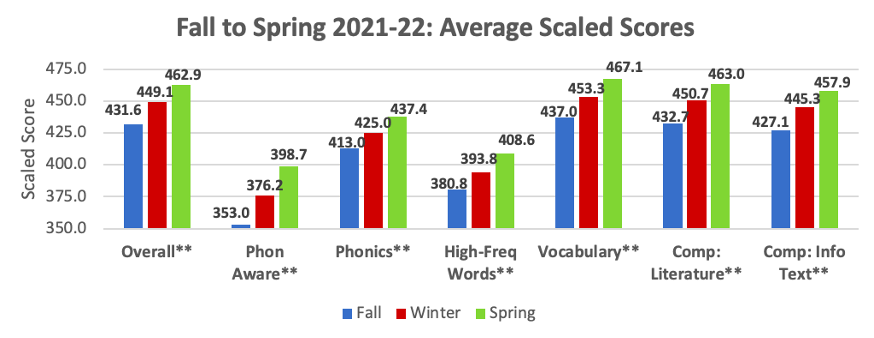

MCL.380.1280f: instruction “provides more detailed and varied explanations, more extensive opportunities for guided practice, and more opportunities for error correction and feedback.“
Lindamood-Bell programs employ the Socratic method for error correction as well as miscalling. Teachers aid students in analyzing their responses, preparing students to correct mistakes when reading independently.


Lindamood-Bell’s Response to Intervention model guides teachers, specialists, and coordinators in best practices.
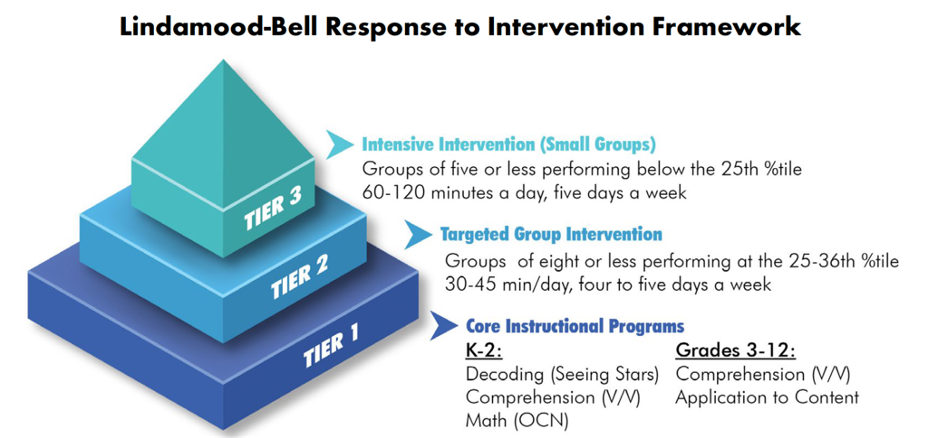
Progress is monitored daily, weekly, and monthly via qualitative notes taken each lesson, differentiated lesson plans written or edited each time the student is ready for change, and progress monitoring forms included in the program kits.
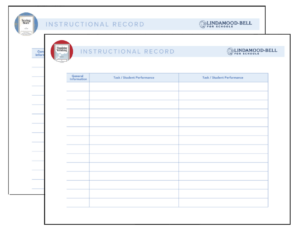
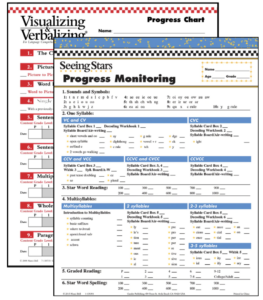
Early Literacy Coaching Model: “Effective literacy coaches have specialized knowledge and skills about literacy.”
Lindamood-Bell’s coaching team comprises educators with expertise in Lindamood-Bell programs and a wealth of experience with students of all ages and needs.
Early Literacy Coaching Model: “Effective literacy coaches apply their specialized knowledge about adult learning principles when working with educators”, “enhance teacher practice and improve student learning,” and use “a multi-faceted approach to coaching.”
Lindamood-Bell has spent decades refining workshops and our four-tier coaching model to make training engaging and relevant. Skills learned are immediately applicable. Coaches engage staff in various settings, including one-to-one collaborative discussions, conferencing, and team meetings. We help with lesson plans and model instruction so teachers can see programs in action with their students. We then slowly transition to co-teaching and observation with written feedback. Successful coaching depends on trust, so written feedback is kept between the teacher and their Lindamood-Bell coach.
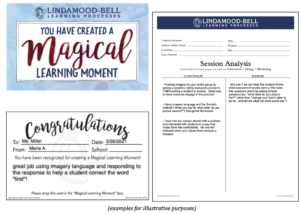
Early Literacy Coaching Model: “effective literacy coaches demonstrate specific skills and dispositions in order to engage teachers and build collaborative relationships.”
Levels 3 and 4 of Lindamood-Bell’s Professional Development model include job-embedded coaching. Lindamood-Bell Consultants model instruction in the setting teachers choose, whether in small groups, one-on-one, in a Special Education setting, as an intervention, or as a supplement to classroom curriculum. The coach explains instructional choices while modeling, allowing the teacher to make sense of the process and ask questions in return. The goal is for teachers to become proficient in sensory-cognitive instruction.
“The LMB coaches consistently provide personalized praise and feedback to the teacher and student(s). This positive interaction leads to both teacher and student confidence.“
– Jennifer Foster, Title I Elementary Specialist, Fort Smith Public Schools
“In my nearly 20 years of experience in education, never before have I encountered a teaching strategy that is so intuitive, it has become part of my own way of thinking.”
– Soultana Kalligas, 2nd Grade Teacher, Pinellas County Schools
“Teachers in Kentwood are very receptive to coaching. The most prevalent concern at the beginning is probably that coaching might be evaluative. Establishing relationships of trust with teachers and their students through modeling lessons, and collaborating after the lessons, quickly negates this concern.”
– Sheryl McCarthy, Reading Consultant, Kentwood Public Schools
Early Literacy Coaching Model: “Literacy coaching is most effective when it is done within a multi-year school-wide, or district-wide initiative focused on student learning and is supported by building and district administrators.”
Levels 3 and 4 of Lindamood-Bell’s Professional Development model were created to help districts build a sustainable, long-term literacy initiative and add to successful models already in place. We invite principals to program overviews, hold monthly meetings with administrators, send email updates on instruction and milestones, and provide end-of-year reporting, all while modeling best practices in literacy coaching and instruction for staff.
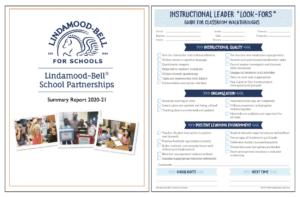
Lindamood-Bell welcomes the opportunity to provide Michigan schools and students the support they need to excel. Reserve your spot in one of our public workshops, or contact our For Schools team to learn how Lindamood-Bell PD can complement your district literacy model to meet legislation, build capacity, maintain sustainability and improve student achievement at all levels.





